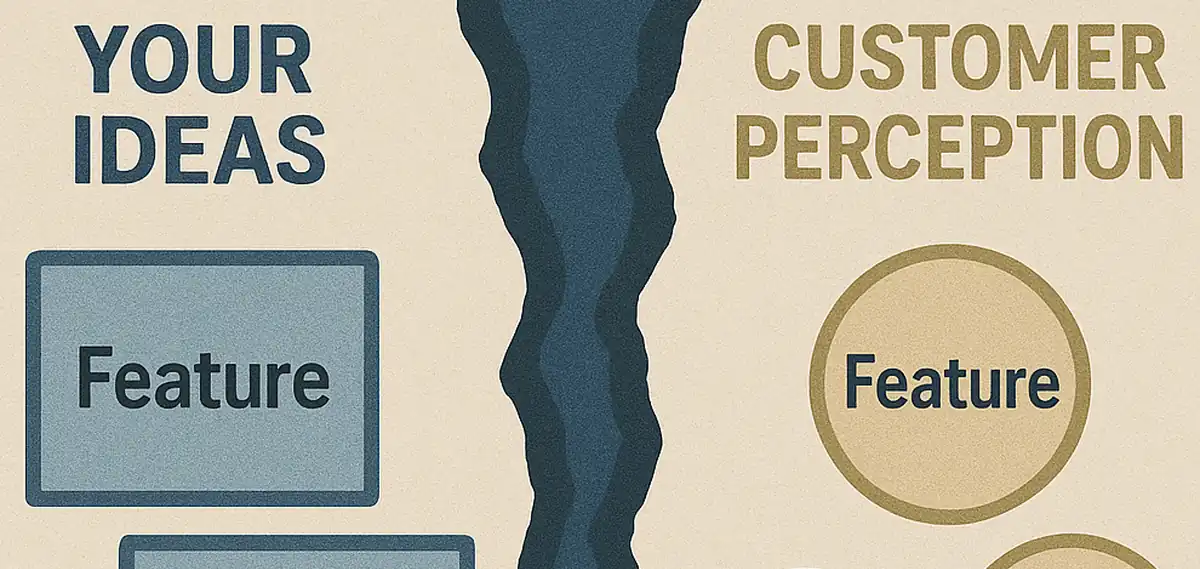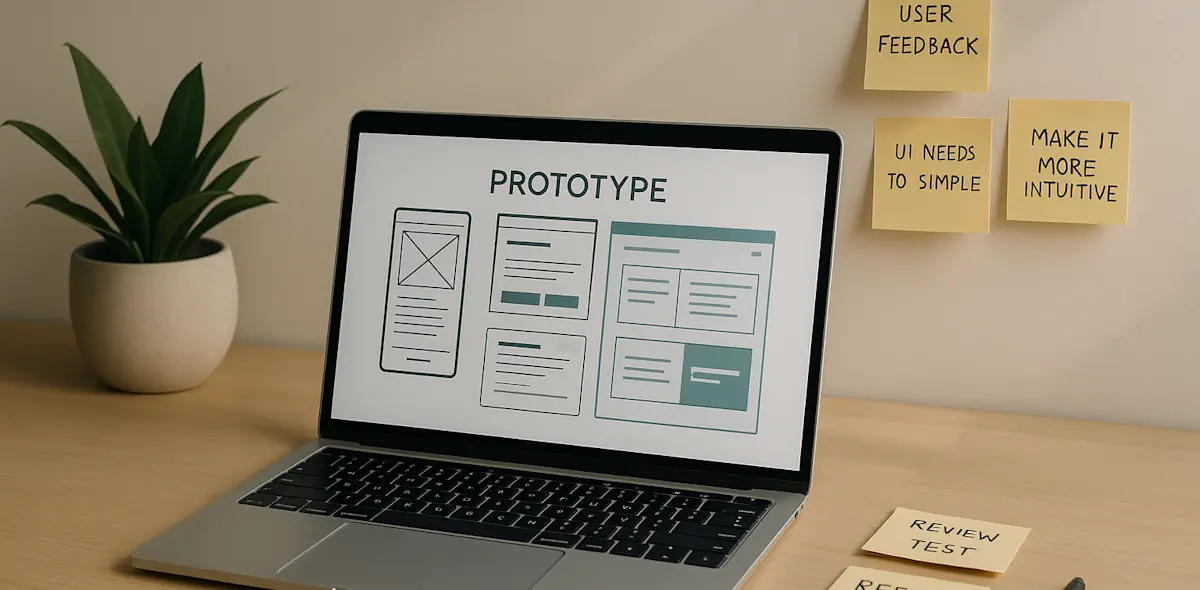Perception Is Your Product's Reality
Product leaders often build great solutions that customers don't value. Here's why perception trumps perfection every time.

A product team spent eight months building what they called “the most elegant solution” they’d ever created. Beautiful architecture, flawless performance metrics, zero bugs in production. The customers hated it.
Not because it didn’t work—it worked perfectly. They hated it because they couldn’t understand why they needed it.
The Uncomfortable Truth About Value
Recent meta-analysis of customer perceived value research by Blut et al. (2024) confirms what many product leaders resist accepting: all value is perceived value. The worth customers assign to your product exists entirely in their minds, shaped by expectations, experiences, and beliefs rather than intrinsic merit.
Your brilliant feature set? Irrelevant if customers can’t perceive its benefit. Your technical superiority? Meaningless if users don’t feel it improves their lives. Your months of engineering effort? Wasted if the value isn’t obvious to the people who matter most.
“The customer’s perception is your reality.”
— Kate Zabriskie
This isn’t feel-good customer centricity—it’s business reality backed by compelling data. Harvard Business Review research shows companies that successfully connect with customers’ emotions see 70% increases in usage and 40% growth in new accounts. McKinsey’s 2025 State of Consumer research found that nearly 70% of people are willing to spend more with companies they perceive as providing excellent experiences.
Why Product Teams Get This Wrong
Most product leaders operate from an inside-out perspective. We build solutions based on technical capabilities, competitive analysis, and internal priorities. We measure success through deployment frequency, performance metrics, and feature adoption rates.
Research reveals significant disconnects between how designers and users perceive innovation—even when exposed to identical features. What feels like an obvious improvement to someone who built it can feel like unnecessary complexity to someone just trying to get a job done.
The symptoms are everywhere:
- Teams celebrating velocity while customers churn
- Features with high development cost but low usage
- Products that “test well” but don’t generate loyalty
- Solutions addressing organizational needs, not customer problems
The Psychology Behind Perceived Value
Understanding how customers form value perceptions changes everything about how you approach product development. Research in emotional design shows that users form immediate, lasting impressions based on three cognitive levels: visceral (gut reactions), behavioral (subconscious evaluation), and reflective (conscious judgment).
Value perception is influenced by emotional benefits, cognitive biases, social factors, and contextual elements far more than functional attributes. Customers use cognitive shortcuts—price as quality indicator, brand reputation, visual design cues—especially when objective evaluation proves difficult or time-consuming.
How Customers Actually Evaluate Products
Understanding Customer Value Perception
Traditional product metrics miss the point. You can’t manage perception through deployment frequency or bug counts. Customer Perceived Value requires different measurement approaches: qualitative research to understand emotional responses, quantitative surveys to gauge satisfaction and willingness to pay, and behavioral analysis to reveal usage patterns.
Start measuring these instead:
- Net Promoter Score (NPS) for loyalty and emotional connection
- Customer Effort Score (CES) for perceived ease of use
- Jobs-to-Be-Done interviews to understand value in context
- Conjoint analysis to reveal feature value prioritization
- Social listening to capture authentic sentiment
Customer perceived value drives purchase decisions, willingness to pay, loyalty, and word-of-mouth marketing—the metrics that actually matter for business success.
Building for Perception: Four Strategic Shifts
1. Lead with Emotional Connection, Support with Function
Apple’s design strategy has long been rooted in emotion—from unboxing excitement to ownership pride. They create feelings of joy, sophistication, and belonging before customers even use the features.
Your approach: Design the emotional experience first, then build the technical implementation to support it. Ask “How do we want customers to feel?” before “What features should we build?”
2. Make Benefits Immediately Obvious
Research shows that cognitive fluency—the ease with which customers process information—directly impacts perceived value. Products that intuitively communicate benefits are evaluated more positively.
Your approach: If customers need training to understand your value proposition, you haven’t designed the value proposition correctly. Obvious benefits create immediate perception of worth.
3. Leverage Social and Contextual Factors
Despite low trust in social media as information source, McKinsey research shows 32% of consumers research products socially before purchasing, rising to 50% in emerging markets. Academic studies confirm that perceived quality and social value significantly influence brand loyalty and satisfaction.
Your approach: Design for word-of-mouth from day one. Create features that naturally generate positive social proof and make sharing valuable experiences effortless.
4. Align the Entire Experience
Research reveals that 40% of retail customers choose options that aren’t cheapest, seeking higher “surplus” value between price and benefits. Value perception spans the entire customer journey, not just the product itself.
Your approach: Ensure marketing, sales, onboarding, support, and product experiences reinforce the same value narrative. Misalignment between promise and delivery destroys perceived value faster than any competitor.
The Execution Challenge
The hardest part isn’t understanding that perception matters—it’s changing how your team operates. Engineering teams optimize for performance. Design teams optimize for usability. Product teams optimize for adoption. But who’s optimizing for customer value perception?
Create accountability for perception:
- Include perception metrics in sprint reviews
- Conduct monthly value perception research
- Test emotional response alongside functional performance
- Make customer value perception a shared responsibility
The Competitive Reality
Your competitors aren’t just building better features—they’re building better perceptions. Companies that understand value perception can justify premium pricing, achieve superior market positioning, and create competitive advantages that are difficult to replicate.
Businesses that boost customer perceived value through excellent service, value-added offerings, and customer feedback integration see higher conversion rates and increased differentiation.
The teams that win aren’t necessarily building the best products—they’re building the products customers believe are best.
Your Next Step
Before your next product planning session, ask a different question. Not “What should we build?” but “What value do customers need to perceive, and how will we make that perception obvious?”
Because in the end, your product isn’t what you built—it’s what customers believe you built.








